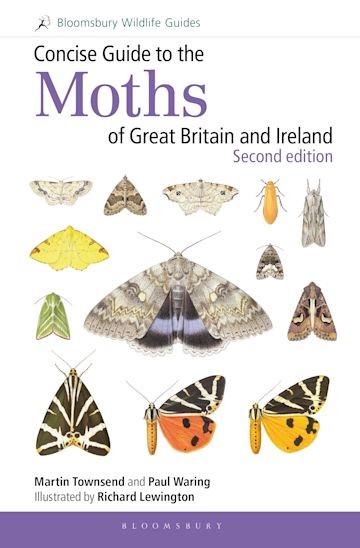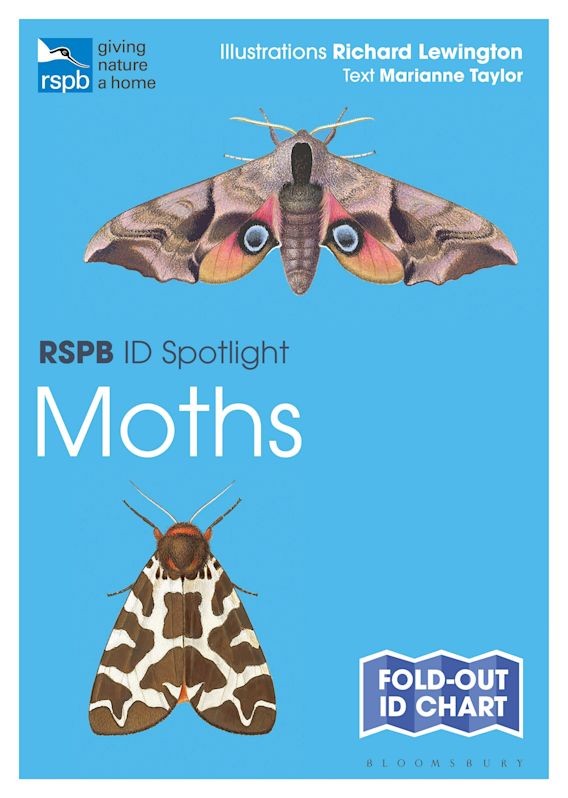Magical Moths - How well do you know them?
Moths can be found throughout Ireland. They are an important indicator species and their presence tells us about the health of the natural environment around us. Both moths and butterflies come from the same order of insects called Lepidoptera. More often than not, they have a duller pattern and colour than their butterfly counterparts but still play an equally important part as pollinators.
This quiz will run from the 7th February to the 16th. All completed responses with name and email details will be entered into the draw to win one of the following prizes:
 - 1st Prize - Bloomsbury Wildlife Guides Concise Guide to the Moths of Great Britain and Ireland & Clearwing Moth Educational Sheet
- 1st Prize - Bloomsbury Wildlife Guides Concise Guide to the Moths of Great Britain and Ireland & Clearwing Moth Educational Sheet
 - 2nd Prize - RSPB ID Spotlight Fold Out ID Chart on Moths & Clearwing Moth Educational Sheet
- 3rd Prize - RSPB ID Spotlight Fold Out ID Chart on Moths
The winner will be drawn on the 18th of February, contacted directly via email, and announced on Facebook, Instagram and Twitter.
- 2nd Prize - RSPB ID Spotlight Fold Out ID Chart on Moths & Clearwing Moth Educational Sheet
- 3rd Prize - RSPB ID Spotlight Fold Out ID Chart on Moths
The winner will be drawn on the 18th of February, contacted directly via email, and announced on Facebook, Instagram and Twitter.
In the summer of 2021, Cork Nature Network conducted a survey of the Clearwing moth species in Cork.
Ken Bond is an expert in Ireland’s Lepidoptera (butterflies and moths) and co-runs the Cork Nature Network Entomology Group. In 2021, he recommended that Cork Nature Network apply for funding and carry out this survey as little is known about Ireland’s clearwing moth species (family Sesiidae). Clearwing moths are diurnal, meaning they are active during the day, and for this reason, they are often not recorded by common moth survey techniques such as light traps. They are also usually quite small and can be mistaken for flies when they are seen in flight during the day.
We would like to take a moment to thank the National Parks and Wildlife Service for funding the prizes for this quiz and the Clearwing moth survey.
We would also like to thank Ken Bond and the volunteers who assisted him in the survey.


In the summer of 2021, Cork Nature Network conducted a survey of the Clearwing moth species in Cork.
Ken Bond is an expert in Ireland’s Lepidoptera (butterflies and moths) and co-runs the Cork Nature Network Entomology Group. In 2021, he recommended that Cork Nature Network apply for funding and carry out this survey as little is known about Ireland’s clearwing moth species (family Sesiidae). Clearwing moths are diurnal, meaning they are active during the day, and for this reason, they are often not recorded by common moth survey techniques such as light traps. They are also usually quite small and can be mistaken for flies when they are seen in flight during the day.
We would like to take a moment to thank the National Parks and Wildlife Service for funding the prizes for this quiz and the Clearwing moth survey.
We would also like to thank Ken Bond and the volunteers who assisted him in the survey.










